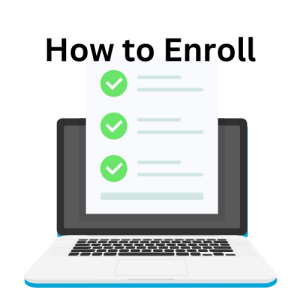Medicare Open Enrollment Supplemental Insurance
The uncertainty of healthcare costs may be distressing. However, with Medicare Supplement Insurance, also known as Medigap, you may rest a little easier knowing there will likely be a safety net to catch those unforeseen medical expenses.
To possibly ensure you’re getting the best possible coverage, especially during the critical Medicare open enrollment supplemental insurance period, you will likely need to understand the potential intricacies of Medigap insurance, which is what this article will explain.
Key Takeaways
- During open enrollment, Medicare Supplement Insurance could be obtained without facing higher premiums or denial of coverage.
- The Initial Enrollment Period is the ideal time to purchase a Medigap policy. Comparison of plans and provider networks may also be essential for choosing the most suitable plan.
- Guaranteed Issue Rights will likely protect members from denial of coverage outside the initial enrollment period, while Special Enrollment Periods may be available for those who meet certain criteria.
Compare Plans in One Step!
Enter Zip Code
Understanding Medicare Supplement Insurance and Open Enrollment
Medicare Supplement (Medigap) plans have been designed to complement Original Medicare by potentially filling in the coverage gaps and assisting with out-of-pocket expenses that may not be covered by Medicare Parts A and B. These gaps could include copayments, coinsurances, and deductibles, which could quickly add up if you require frequent or extensive medical care.
Open enrollment is a pivotal time in the Medicare program. This period, which usually begins when an individual turns 65 and enrolls in Medicare Part B, allows you to enroll in Medicare Supplement Insurance without penalties, undergoing medical underwriting, or facing denial of coverage.
This will likely be the best time to enroll in a Medigap plan since insurance companies, during this period, may not be able to refuse coverage or impose higher premiums due to pre-existing conditions.
The Critical Timeline: Navigating Your Medigap Open Enrollment Period

The Medigap Open Enrollment Period is a significant six-month interval starting when an individual turns 65 and enrolls in Medicare Part B. This period could offer an excellent opportunity to procure a Medigap policy without the requirement for medical underwriting, possibly ensuring you won’t be penalized or denied coverage based on your health condition.
However, if you miss the open enrollment period, you may be subject to increased costs or even coverage denial, particularly if you have pre-existing health conditions.
The six-month period ends on the final day of the month, six months after you turn 65 and enroll in Medicare Part B – this is your deadline for selecting a Medigap plan.
First Steps in the Initial Enrollment Period
The most opportune time to purchase a Medigap policy is during the initial enrollment period. This period, which commences when you turn 65 or older and enroll in Medicare Part B, will likely be the best opportunity to acquire a Medicare Supplement policy without any penalties or medical underwriting.
However, once this six-month window closes, the availability and cost of acquiring a Medigap policy may become restricted, potentially affecting your coverage and expenses.
To enroll, call one of our licensed agents at 1-833-641-4938 (TTY 711), Mon-Fri 8 am-9 pm EST. They can provide comprehensive information, personalized guidance, and ongoing assistance to navigate the enrollment process for private insurance companies, making it easier for beneficiaries to make informed decisions about their healthcare.
Understanding Guaranteed Issue Rights
Guaranteed Issue Rights are safeguards that could protect beneficiaries from being denied coverage or facing elevated costs due to their health status in specific circumstances, such as purchasing Medigap policies beyond their open enrollment period.
An example of this could be when individuals disenroll from Medicare Advantage within 12 months of their initial enrollment. These individuals will likely have the right to purchase a Medigap policy, regardless of their medical history.
However, beneficiaries applying for Medigap coverage after their initial six months of enrollment in Medicare Part B could risk policy denial or higher premiums, particularly if they have pre-existing conditions.
Eligibility and Enrollment: Who Can Purchase Supplemental Insurance?
Before you can enroll in a Medigap policy, you must first be enrolled in both Medicare Part A and Part B, collectively known as Original Medicare.
However, if you’re enrolled in a Medicare Advantage plan, you’ll likely be ineligible to purchase a Medigap policy.
State regulations could also play a significant role in Medigap coverage, particularly when it comes to certain pre-existing conditions. Each state will likely have specific rules regarding the coverage of these conditions under Medigap, which could significantly influence the policy application process.
Hence, it may be advisable to acquaint yourself with your state’s regulations before applying for a Medigap policy.
Comparing Plans: How to Choose the Right Medigap Coverage

When selecting a Medigap plan, member should choose one that fits their needs. With a diverse range of Medigap plans available, denoted by letters A, B, C, D, F, G, K, L, M, and N, each could offer different coverage options and benefits, finding the right fit may seem challenging.
However, by evaluating the potential costs, benefits, and provider networks, you could find the ideal plan.
Analyzing Possible Costs and Benefits
When comparing Medigap plans, it may be imperative to consider both the costs and benefits. The potential cost of Medigap plans may vary based on several factors, including age, location, and health needs.
While a lower-price plan might seem attractive, if it doesn’t provide the coverage you need, you could be left with a costly bill.
The possible benefits of Medigap insurance policies may include coverage for certain Medicare-covered services like hospital stays, doctor visits, and medical procedures. However, they may not cover prescription drugs, routine vision and dental care, hearing aids, eyeglasses, long-term care, and private-duty nursing.
Weighing the potential costs and benefits of each plan against your healthcare needs and budget could be crucial to ensure maximum value for your investment.
Provider Networks and Flexibility
Another potential factor to consider when selecting a Medigap plan may be the provider network. In the context of Medigap insurance, provider networks may not be applicable.
Some Medigap plans may be used with any doctor or hospital that accepts Medicare. This means you could have the freedom to select any healthcare provider who accepts Medicare, possibly providing you with increased flexibility and access to a broader range of healthcare facilities.
However, not all Medigap plans may provide the same level of flexibility in terms of provider networks. The extent of provider network flexibility will likely differ depending on the specific Medigap plan.
When choosing a Medigap plan, members may want to assess the details of each plan to understand the provider network options that could be offered.
Switching Plans: Making Changes During Medicare Open Enrollment
The Medicare Open Enrollment period, which occurs annually from January 1st through March 31st, allows beneficiaries to switch plans.
However, your health condition could influence your available options and possible costs during the Medicare Supplement Open Enrollment. For example, if you have existing health issues, you may confront higher premiums or even coverage denial.
The Potential Impact of Health Status on Plan Choices
Your health status could significantly influence your Medigap plan choices. For instance, those with pre-existing health conditions may face restricted options or potentially increased premiums when choosing a plan.
However, federal guarantees and protections will likely be in place to help ensure coverage regardless of pre-existing conditions, although a maximum wait period of six months may be applied for coverage of these conditions.
Some states may provide options for beneficiaries under 65 and with disabilities, possibly ensuring they could get access to supplemental coverage, as allowed by federal law.
Late Enrollment: Possible Consequences and Alternatives

Enrolling late in Medigap may involve consequences, such as the possibility of coverage denial, which may be dependent on your age, health status, and location, and the potential for higher premium costs.
Avoiding the Late Enrollment Penalty
Avoiding the late enrollment penalty will likely require timely action during the Initial Enrollment Period or utilizing guaranteed issue rights.
These rights could protect individuals from being refused coverage or possibly facing higher charges due to health status or pre-existing conditions and may even enable them to enroll in Medicare or Medigap plans without penalties, even if it’s outside the initial enrollment period.
Potential Coverage Considerations: Drug Plans and Extended Care
Beyond standard Medigap coverage, other possible considerations such as Part D drug coverage and extended care options should be considered when choosing an insurance company.
Some points to keep in mind about the Part D prescription drug plan may be:
- These plans could vary significantly in terms of the prescription drugs they cover.
- They may also have utilization management restrictions, like prior authorization, quantity limits, and step therapy.
Taking these possible factors into account could help you make an informed decision about your Medicare coverage.
 How to Enroll: Steps to Secure Your Medigap Policy
How to Enroll: Steps to Secure Your Medigap Policy
Now that you’ve navigated the labyrinth of Medigap coverage, it’s time to secure your policy.
To start:
- Be enrolled in both Medicare Part A and Part B.
- Compare the Medigap plans that are available in your area and suitable for your specific needs.
- Contact one of our licensed insurance agents to obtain detailed information.
Once you’ve selected a plan, you can apply by calling one of our licensed agents at 1-833-641-4938 (TTY 711), Mon-Fri 8 am-9 pm EST. They can provide comprehensive information, personalized guidance, and ongoing assistance to navigate the enrollment process for private insurance companies, making it easier for beneficiaries to make informed decisions about their healthcare.
Remember to have your documentation ready, which may include:
- Proof of age
- Citizenship or legal residency
- Your social security card
- Current health insurance information
Beyond Open Enrollment: Special Circumstances and Year-Round Options
Aside from the open enrollment period, there may also be Special Enrollment Periods and continuous enrollment opportunities for those with unique circumstances or needs.
These could enable beneficiaries to make adjustments to their coverage in response to specific events or circumstances. The specific regulations and time frames for these special periods may differ, so verifying them based on your unique circumstances may be advised.
Special Enrollment Periods and Their Qualifications
Special Enrollment Periods are predetermined times outside of the regular open enrollment window when you can modify your coverage due to particular life events. These life events might include:
- reaching the age of 65
- experiencing loss of employer coverage
- relocating outside of your plan’s service area
- gaining or losing Medicaid eligibility
- meeting the criteria for the Extra Help program
Continuous Enrollment Opportunities
Continuous enrollment opportunities could present another feasible option for maintaining your Medicare coverage.
As long as you meet the eligibility criteria and fulfill premium payments, you may be able to sustain your Medicare coverage indefinitely, without a specified end date or time limit. So, even if you’ve missed the open enrollment window, you’re not entirely out of luck.
Maximizing Potential Benefits: Utilizing Preventive Services and Care Coordination
Once you’ve enrolled in Medigap coverage, you could make the most of it by utilizing preventive services and care coordination.
Some of the preventive services that may be covered by Medigap might include:
- Examinations
- Vaccinations
- Lab tests
- Screenings
- Health monitoring programs
- Counseling
- Education
These services will likely prioritize prevention over treatment, early detection of health issues, and addressing health concerns through screenings, check-ups, and counseling.
Care coordination could be another way to maximize your potential Medigap benefits. This may involve:
- The possible integration of medical and community resources to provide comprehensive and coordinated care
- Evaluating an individual’s needs across medical, physical, and social support
- Developing a personalized care plan
This could ensure your healthcare services may be integrated and potentially reduce unnecessary hospitalizations, possibly leading to more efficient utilization of Medigap benefits.
Summary
This comprehensive article has explained Medigap insurance, from understanding what it is and how it could complement Original Medicare, to the critical open enrollment period, eligibility criteria, comparing plans, and enrollment steps.
This article has also highlighted the importance of preventive services and care coordination, special enrollment periods, and continuous enrollment opportunities.
With this knowledge, you’ll likely be equipped to make informed decisions about your Medigap coverage and potentially ensure you’re getting the best possible protection against unforeseen medical expenses.
Frequently Asked Questions
→ Does Medicare Supplement open enrollment take place?
Yes, Medicare Supplement open enrollment takes place in the six-month period that starts when you are both 65 or older and enrolled in Medicare Part B. During this period, you could enroll in any Medigap plan offered in your area.
→ Can you enroll in Medicare Supplement plans at any time?
You can enroll in Medicare Supplement insurance at any time as long as you are enrolled in Original Medicare Part A and Part B.
→ When a Medicare Supplement policy is purchased during the open enrollment period?
During the 6-month open enrollment period that begins when you turn 65 and are enrolled in Medicare Part B, you could purchase a Medicare Supplement policy at the best available rate regardless of your health status. This will likely be the best time to buy a Medigap policy, as the various options and costs may become more limited afterward.
→ What potential factors should I consider when comparing Medigap plans?
When comparing Medigap plans, members may want to consider the possible costs and coverage benefits, as well as the network of providers and degree of flexibility.
→ What are Special Enrollment Periods and who qualifies for them?
Special Enrollment Periods are times outside the standard open enrollment window that may allow individuals to make changes to their coverage due to life events such as reaching age 65, experiencing loss of employer coverage, or relocation. These periods are available to those who meet specific qualifications.

ZRN Health & Financial Services, LLC, a Texas limited liability company
Russell Noga is the CEO of ZRN Health & Financial Services, and head content editor of several Medicare insurance online publications. He has over 15 years of experience as a licensed Medicare insurance broker helping Medicare beneficiaries learn about Medicare, Medicare Advantage Plans, Medigap insurance, and Medicare Part D prescription drug plans.



 How to Enroll: Steps to Secure Your Medigap Policy
How to Enroll: Steps to Secure Your Medigap Policy
